
Greetings Friends, This monthly newsletter (No. 41) includes; NT Election 2024, NT Government planning, DHA is failing community, quiz, plants and wildlife.
1.0 NT Election 2024 – voting starts 12 August
Find out where candidates stand on Save Lee Point in the Greater Darwin Area.
The major parties are not supporting Save Lee Point. However, all the Independents and Greens in the Darwin area are. Unsure of your NT electorate – find your electorate
Represent NT has been supporting independents and believe:
“With your help, enough community independents may get elected so that they hold the balance of power in the next parliament. When small parties or independents hold the balance of power, the government of the day must consult with them to pass legislation. Community independents can hold the government to account, bringing integrity back to our political system, and helping create a thriving and sustainable community.”
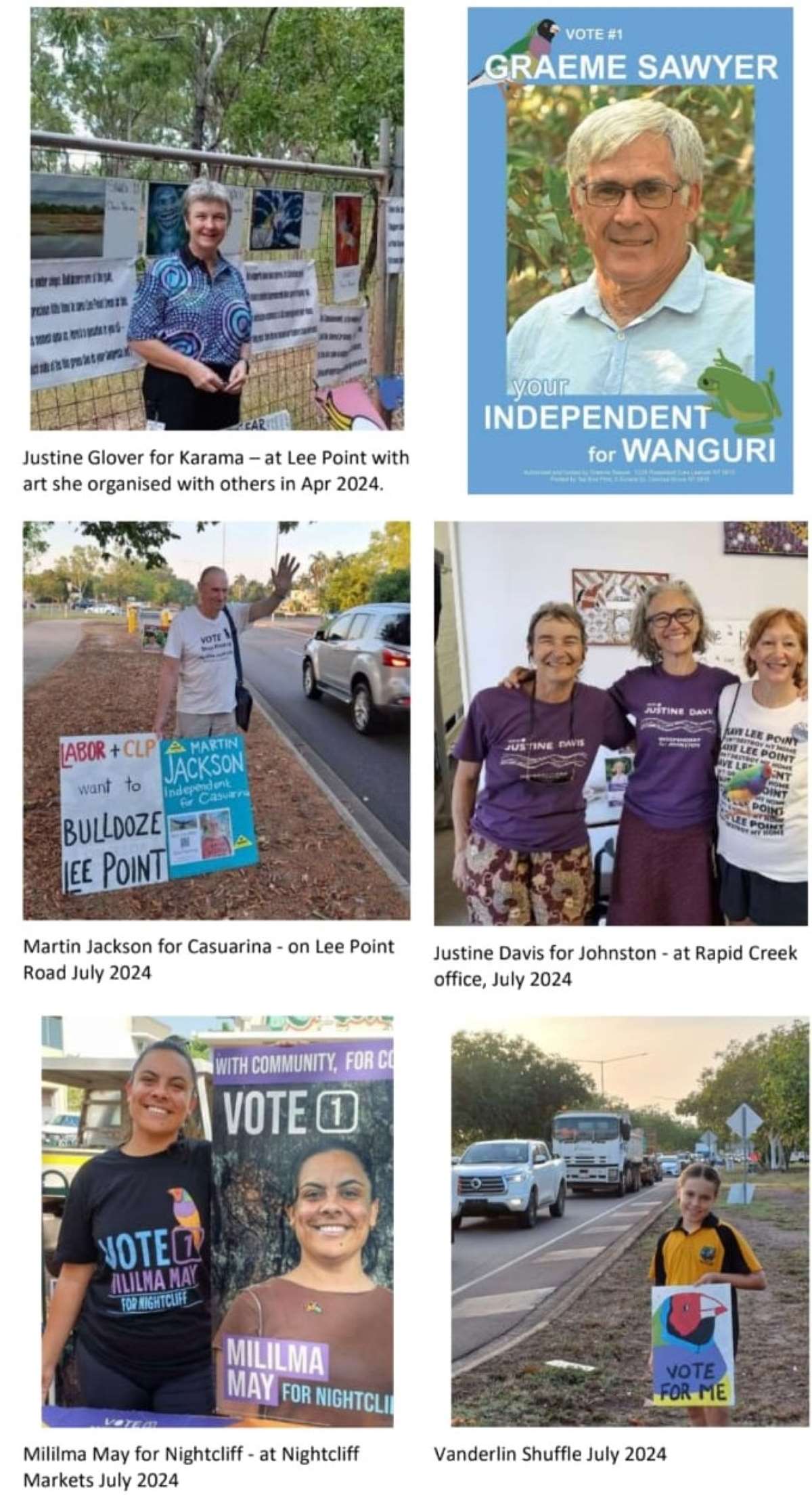
Fig 1. Independent candidates from Darwin’s northern suburbs plus a future candidate, all support Save Lee Point.
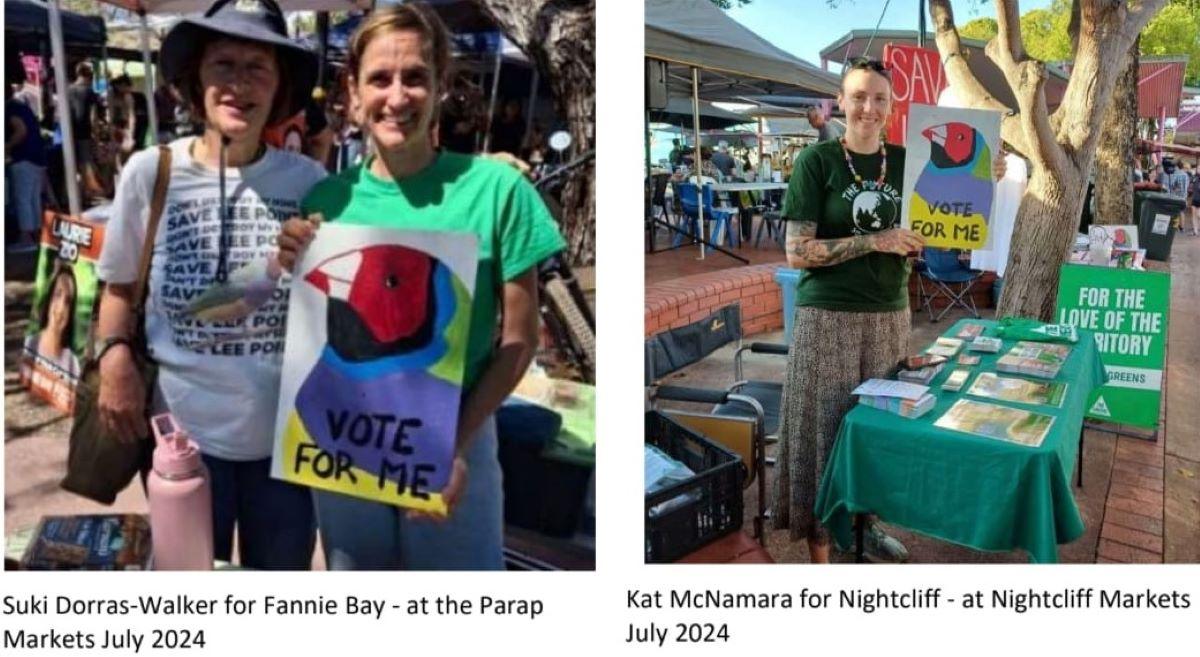
Fig 2. Greens candidates at markets supporting Save Lee Point.
Find out where candidates stand on Save Lee Point in the Greater Darwin Area.
2.0 Government planning
Strategic Directions Planning Policy – the NT Planning Commission has identified a need for an overarching policy to guide future strategic land use planning in the Territory. It is in response to issues such as climate change and scarcity of resources. Have your say closes 31 July 2024.
Lee Point Golf Course decision by DCA – the Development Consent Authority (DCA) hasgranted a Development Permit to Morandini Investments Pty Ltd to develop a golf course with 12 holes (plus space for 6 more holes) and other features.
The first stage (4 stages in total) is a driving range, practice putting green, mini golf area (18 holes) and support facilities.
Fire danger period declared from 2 July to 30 September – If you see a fire on the Lee Point peninsula it is probably arson, call 000, response time is critical for controlling fires
Gamba Grass is threatening parts of the Lee Point peninsula. It is a highly invasive weed that destroys natural habitat through fire and fire promotes its spread.
3.0 Defence Housing Australia (DHA) is failing community
Works remain on pause for Stage 2 and 3 following allegations of illegal clearing by DHA.
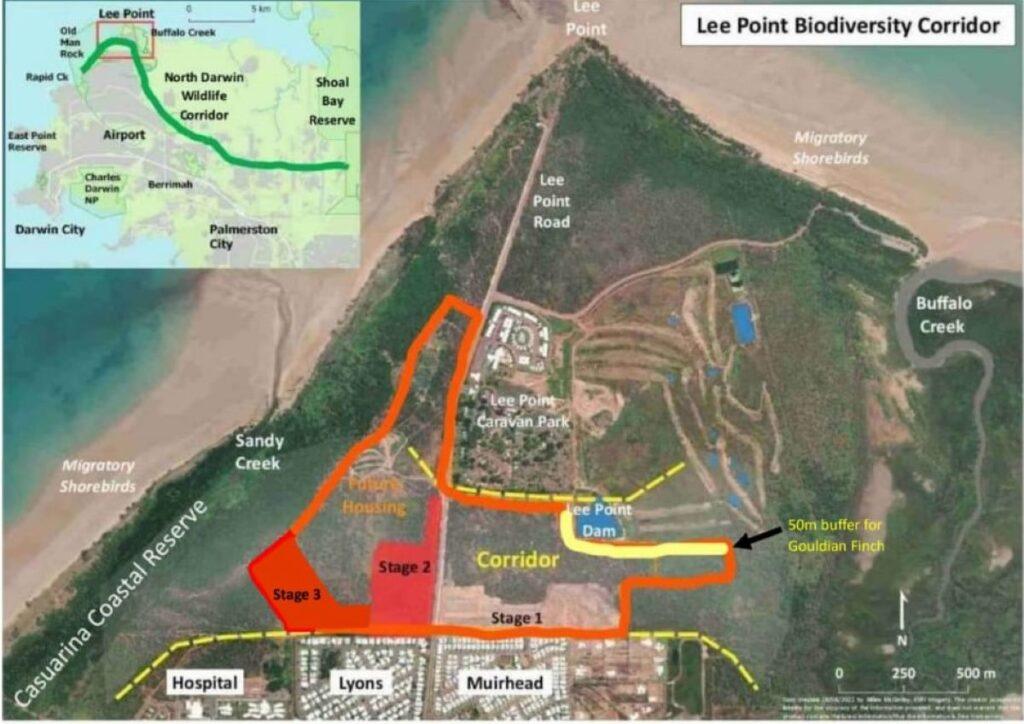
Fig 3. Lee Point peninsula, red outline shows extent of DHA housing with Stage 1, 2 and 3 cleared.
Formal complaints on the recent clearing have been lodged to:
- Australian Government – Minister for Environment and Water 26 June by Environmental Justice Australia acting on behalf of ECNT and Tibby Quall (traditional owner). It involves the potential breach of conditions of EPBC Approval.
- NT Government – Development Assessment Services (DAS) 16 May by Friends of Lee Point Inc on behalf of the Lee Point community – read allegations
As of late July, no decisions had been taken regarding the complaints.
Whats not right:
Inadequate consultation and collaboration with the community on Lee Point. Less than 15% of the northern suburbs knew that there were plans to house thousands of people on the Lee Point peninsula prior to 2020. This is despite the NT Government approving the Lee Point Area Plan (2015) and Development Permits (2018 and 2019).
The developer (DHA) created the Lee Point Area Plan for their project (not an independent body), a clear conflict of interest – read Planning for Lee Point.
- Housing – the taxpayer is underwriting a $400M “luxury style” housing development by DHA at a time when Darwin has a housing affordability crisis – read housing report
- Traffic congestion at Vanderlin Drive/Lee Point Road –is getting worse as more houses are built at Lee Point (an urban sprawl). Locating the DHA houses near jobs and public transport ie. near defence bases would stop the congestion getting worse.
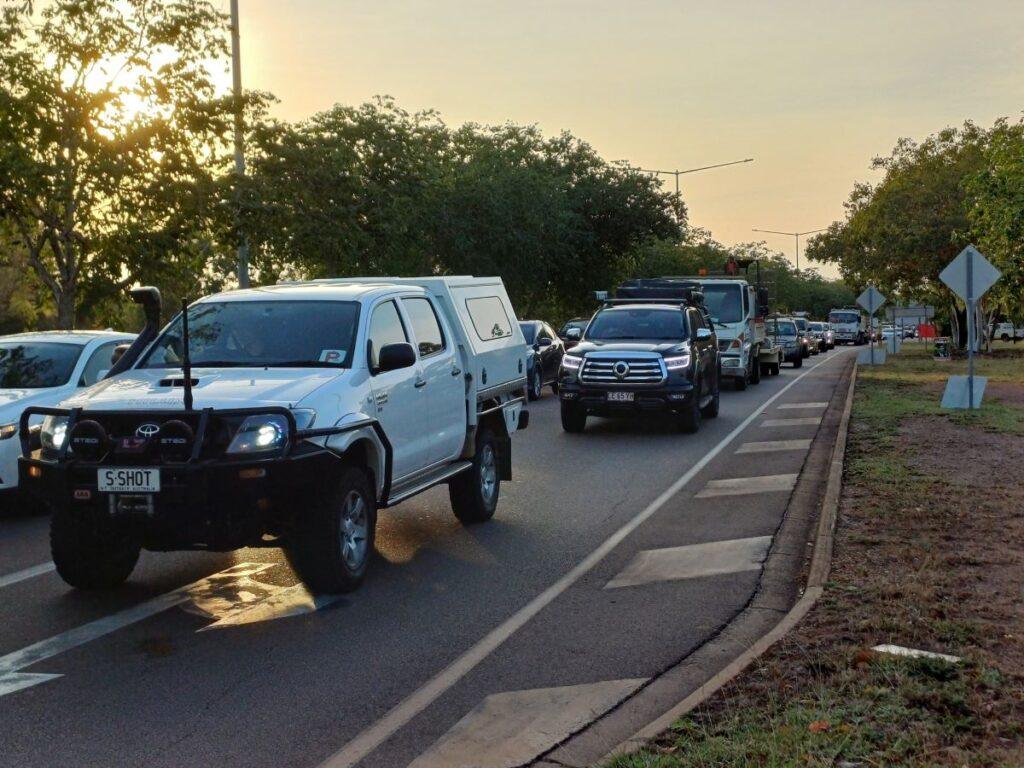
Fig 4. Traffic congestion on 16 July 2024.
- Loss of critical habitat – DHA wants to clear the majority of old-growth trees from the Lee Point peninsula, representing a significant loss from Darwin Wildlife Corridor – read corridor report
- Fire/Gamba Grass – Gamba Grass outbreaks on DHA land pose a fire threat to a significant number of old-growth trees on the Lee Point peninsula – read Gamba Grass report
- Erosion – significant erosion is happening on DHA land (west of Stage 3) and the sediment is impacting CCR – read erosion report
Further information on this ill-conceived project is at Planning for Lee Point.
Take Action
The Lee Point housing project has been plagued by appalling planning from the start, and never should have been allowed to get this far. It is well past time for an investigation into DHA. Take Action:
Please sign this PETITION that calls for an inquiry into DHA.
Or
Get fit letterboxing for a candidate that supports Lee Point, see Section 1.0
Or
Produce some art.
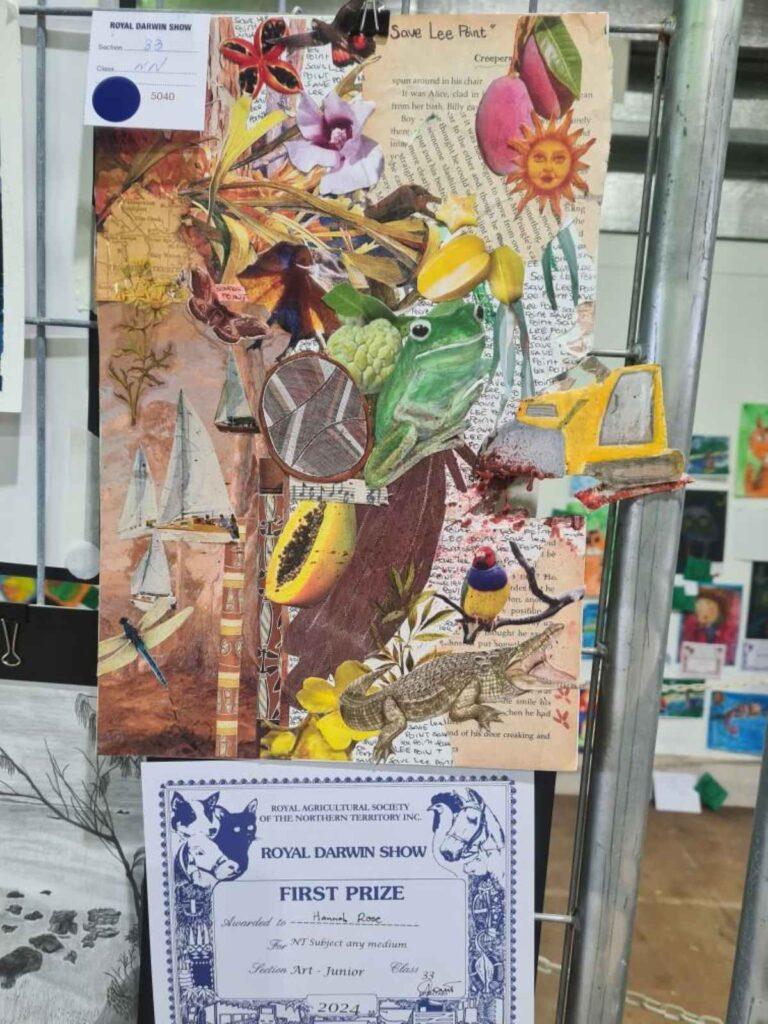
Fig 5. Art by Hannah Rose with Save Lee Point in the Royal Darwin Show 2024.
4.0 Quiz
July could be called autumn in the mangroves at Lee Point due to this mangrove. Do you know its name? Answers at the end.
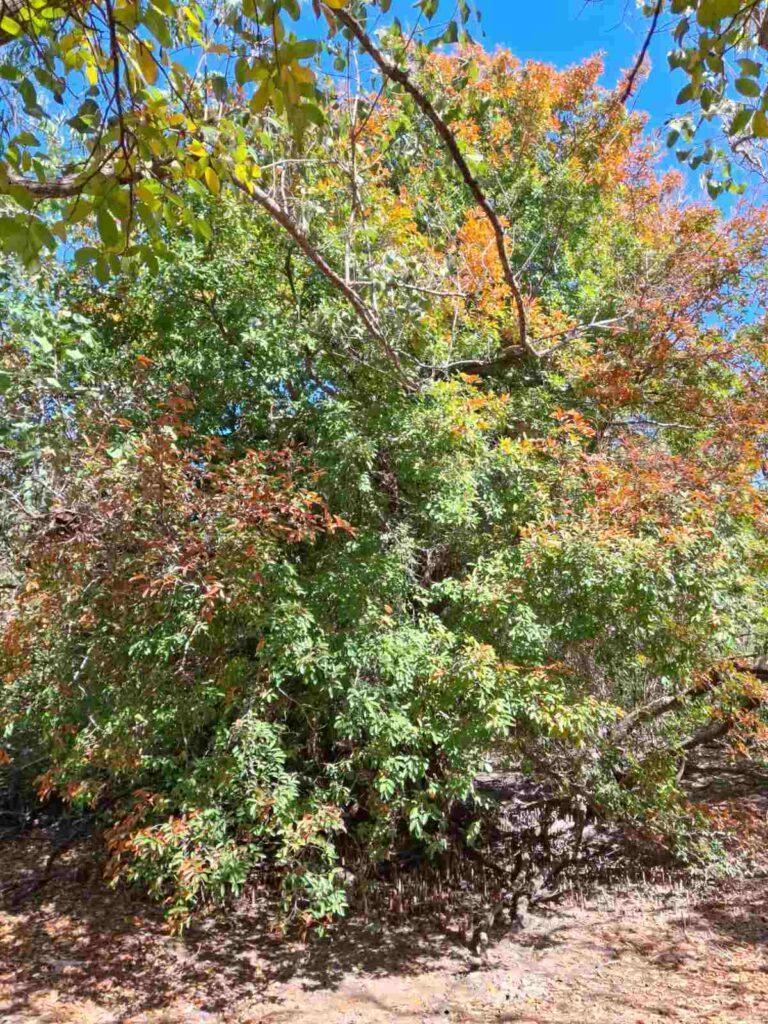
Fig 6. Mangrove tree at Lee Point
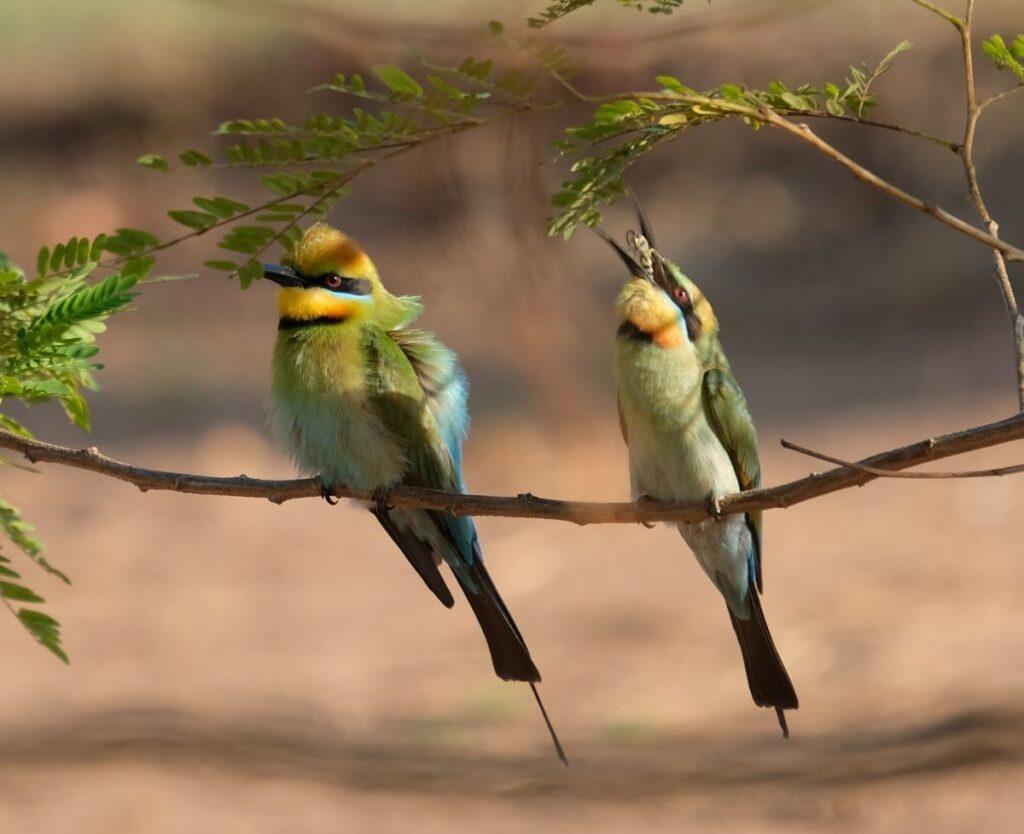
Fig 7. Rainbow Bee-eaters near Lee Point dam.
Q2. Which one is the male?
5.0 Plants and Wildlife
Professor Euan Ritchie (one of Australia’s top ecologists) went birdwatching at Lee Point/ Binybara while in Darwin for two days. We are hoping our current MLA’s can find the time to do the same thing.
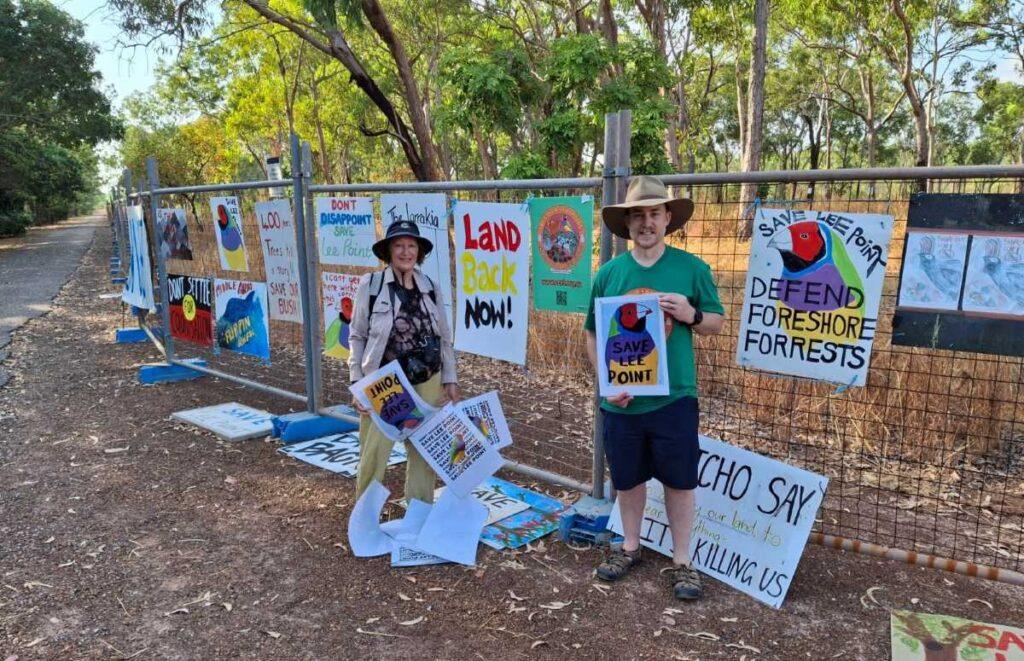
Fig 8. Professor Euan Ritchie at the Lee Point/Binybara Camp
Wilderness Walks have been running each week 5pm Sunday and sometimes on Saturday morning 7am – see FLP Facebook for latest info. They have been identifying 30-45 bird species, see ebird for latest sightings.
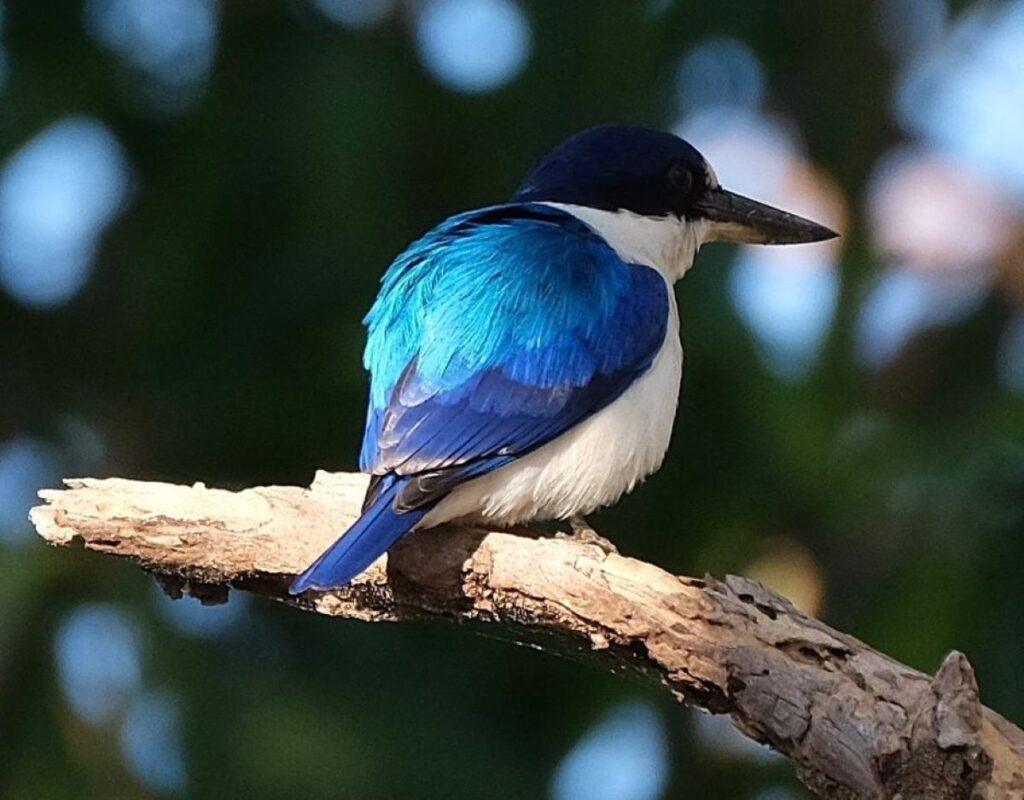
Fig 9. Forest Kingfisher – photo Simone Martin
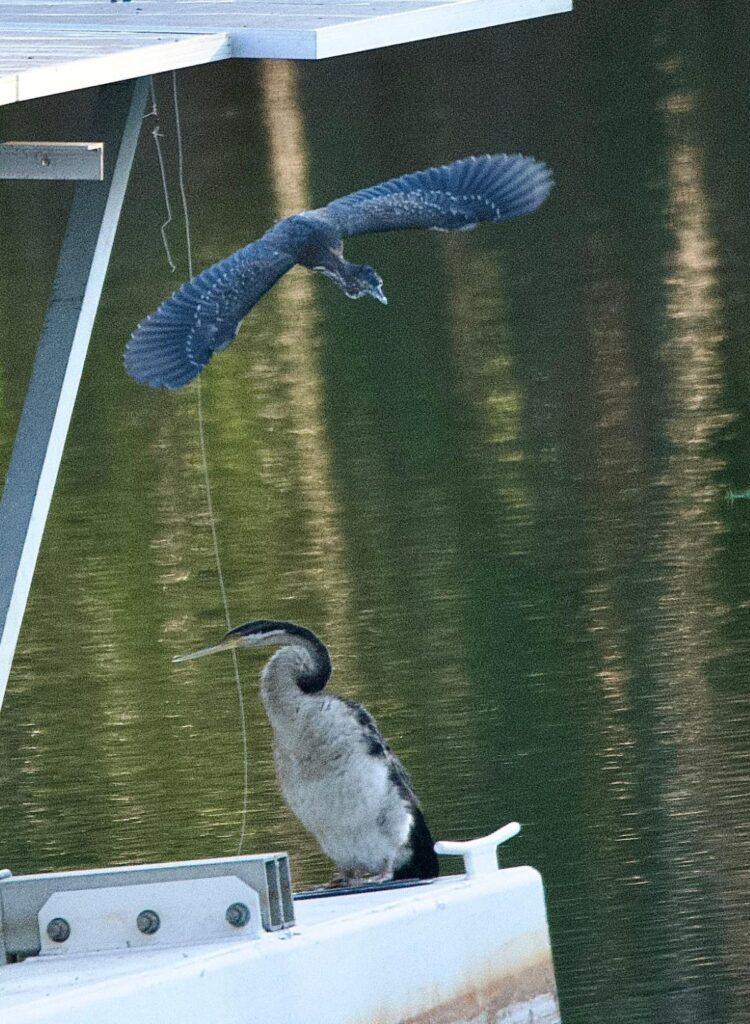
Fig 10. Young Striated Heron flying over a Darter at Lee Point Dam – photo Gavan Keane
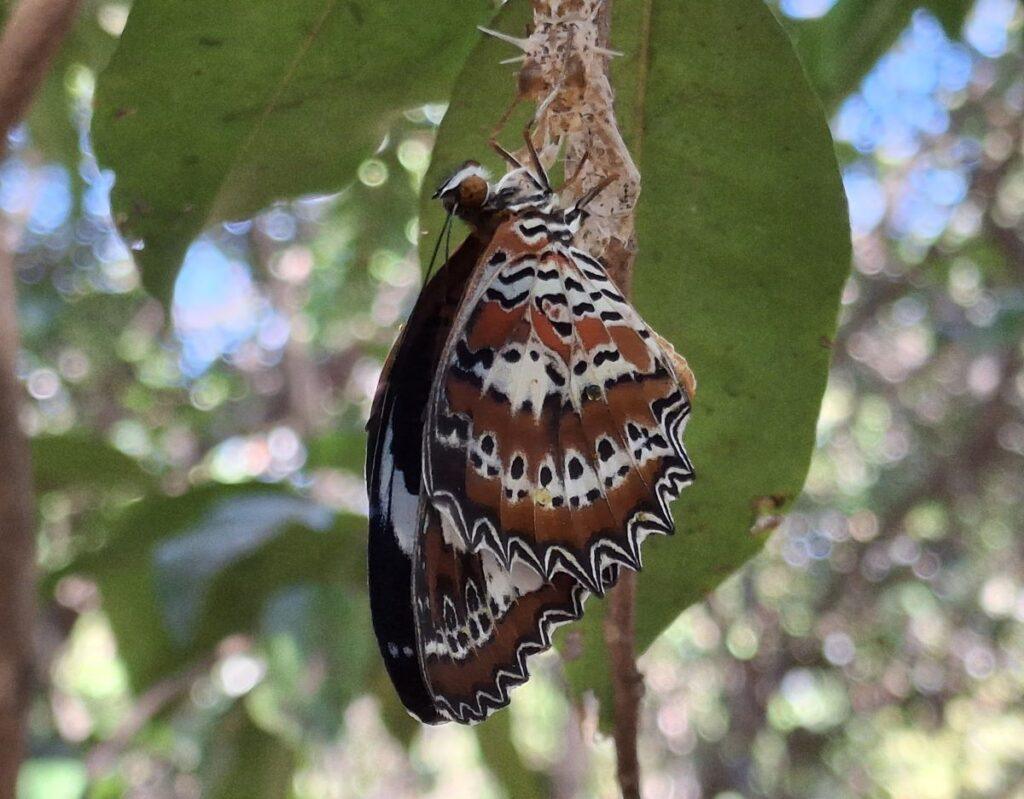
Fig 11. Orange Lacewing Butterfly
Enjoy the Dry Season
Answers to Quiz
Answer Q1 – Mangrove Cedar (Xylocarpus moluccensis) or “Cannon Ball Mangrove” from its fruit.
Leaf fall is conspicuous in the June – July period. The species name “moluccensis” refers to the Moluccas or Spice Islands of Indonesia. Apparently where the first collections of this species were made. Ref: Glenn Wightman, Mangrove Plant Identikit for north Australia Top End.
Answer Q2 – The male Rainbow Bee-eater has longer tail streamers and slightly brighter feathers than the female.